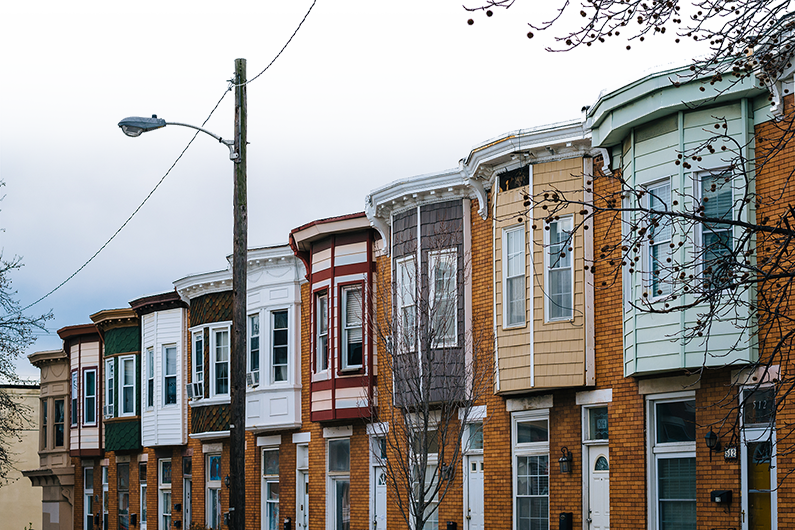
Vision & Values:
Strong, growing, diverse, and economically dynamic communities are vital for human flourishing and are the building blocks of a healthy city.
Leadership & Experience:
I’ve served on the board of the Southeast Community Development Corporation since 2014, including currently as secretary and as chair of the housing committee. I led the planning group for the housing portion of our strategic plan.
I first came to Southeast Baltimore at the recommendation of Bob Embry, with a group of students working with and learning from the Patterson Park Community Development Corporation, as they stabilized and rebuilt Patterson Park and Highlandtown.
After an arson destroyed three homes on Clinton Street, I led efforts to support families as they recovered, while also leading the process to purchase and renovate two of the buildings for early childhood education and refugee resettlement.
In addition to years of direct experience working alongside those experiencing homelessness, I’ve recruited neighbors, participated in, and provided leadership as part of the Point-InTime Counts run by the Mayor’s Office of Homeless Services (a federally-required census every two years to count and survey neighbors experiencing homelessness).
I have worked closely with the staff of the Family Stability Program to ensure that housing-insecure children in our communities have access to comprehensive case management and financial support, preventing homelessness in local families.
I’ve helped to represent our communities at meetings of the Planning Commission, the Board of Municipal Zoning & Appeals, the Committee on Historic and Architectural Preservation, and the Liquor Board.
Priorities:
Community Stabilization and Renewal across East Baltimore:
The stabilization and renewal of communities across East Baltimore requires three things from the city:
- Speed up and increase the quantity of vacant property acquisition and disposition to non-profit and for-profit developers.
- Significantly shorten the timeframe necessary for the permitting process (particularly by addressing the slowest points in the plans review process, including the Fire Marshal’s office).
- Direct significant public investment (city and state) to cover the “appraisal gap” in stabilizing neighborhoods (the losses incurred by non-profit developers on every project, as acquisition and construction costs are higher than the eventual sales price of a home during the early stage of community redevelopment). For example, it might cost $185,000 to acquire and rehabilitate a house in a distressed community, but that property could only sell for $135,000 in the current market. That’s the appraisal gap—and it must be addressed with public funds to jump-start vacant housing rehabilitation and community renewal.
Furthermore, as councilperson I will work with non-profit and for-profit organizations to ensure that we are leveraging existing and expanding state resources to fund community redevelopment, aligned with Governor Moore’s significant legislative and budgetary efforts in this area. This includes the Baltimore Regional Neighborhood Initiative, the Low Income Tax Credit Program, and the new funding streams through the Maryland Community Investment Corporation.
Decent & Affordable Housing:
Plentiful housing, with a variety of configurations and price points, helps to sustain economically diverse and thriving communities.
We have multiple methods to support quality housing at different price points, and I will support the use and expansion of these efforts.
- Our new inclusionary housing law, which aims to embed affordable units in new multi-family projects, is a good start.
- Community land trusts provide a sustainable path to stable affordable housing within communities, which is controlled by those communities, for the benefit of those communities.
- State LITC resources and city Affordable Housing Trust Fund resources can be tapped for multi-family and rowhome development.
- Mixed-income redevelopment, like the Keys Point project planned for the east side of O’Donnell Heights, provides opportunity for people of all income levels to live alongside each other and build community together.
Meanwhile, market-rate tenants are our most vulnerable population, subject to significant increases in rent, poorly-maintained and at times “unofficial” units, absent or even abusive landlords (who are often in a position of manipulating undocumented persons and others who are unaware of their legal rights). The governor’s proposal to significantly increase the fee associated with eviction, and other changes that support tenants in crisis, is a good step forward. A robust inspection program for rental units is critical for protection, safety, and accountability.
The vulnerability of market-rate tenants can be seen in the homelessness statistics of our local schools. Where 5.6% of students across the city are experiencing homelessness, the average rate across our six elementary-middle schools is 13.7%. Expanding efforts at family housing stability through school social workers, community school coordinators, and partner programs like the Family Stability Program is critical for stabilizing our communities and supporting student achievement and wellbeing.
For those already experiencing homelessness, the effective path forward is to significantly increase the availability of permanently supportive housing. The recent (and long-awaited) purchase of hotels for emergency housing is a good step forward, but more shelter space is not the actual answer. Our neighbors need permanent housing with the mental and physical healthcare, addiction treatment, employment support, etc., to help them rebuild their lives.
Land Use & Density:
In-fill development of vacant or underutilized property with multi-family housing or rowhouses is key for adding population density and economic vitality to stabilizing and established communities. We need to reknit the fabric of our communities by increasing the quantity and variety of housing options (size of units, pricing for those units) to meet the needs of different people and households. Vacant commercial and industrial space, as well as vacant lots, provide good opportunity for these developments.
Off-street parking minimums in dense, walkable urban communities with good access to public transit (especially with so many people working remotely) are a major impediment to community development. Every square foot dedicated to storing vehicles rather than housing people or supporting commercial enterprises decreases density and increases costs for residents and businesses.
Sprawling, car-oriented rather than human-scale development is a poor match for dense, historic neighborhoods, or urban areas in general. Additional development should, as much as possible, expand upon the traditional design strengths of our communities (density, walkability, active and engaging streetscapes) rather than detract from it.
